Mark Paskin
Robust Probabilistic Inference in Distributed Systems
Jul 11, 2012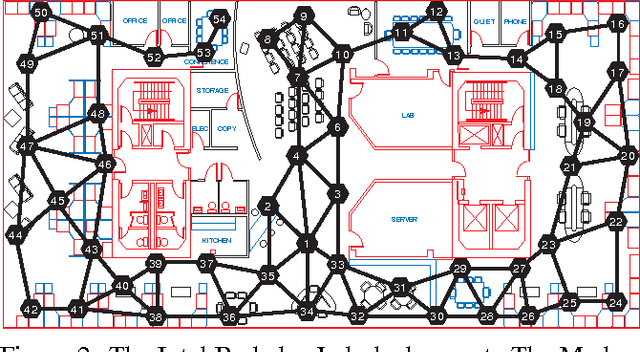

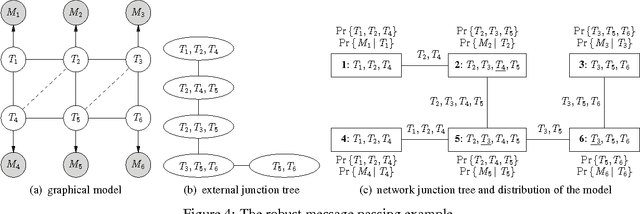

Abstract:Probabilistic inference problems arise naturally in distributed systems such as sensor networks and teams of mobile robots. Inference algorithms that use message passing are a natural fit for distributed systems, but they must be robust to the failure situations that arise in real-world settings, such as unreliable communication and node failures. Unfortunately, the popular sum-product algorithm can yield very poor estimates in these settings because the nodes' beliefs before convergence can be arbitrarily different from the correct posteriors. In this paper, we present a new message passing algorithm for probabilistic inference which provides several crucial guarantees that the standard sum-product algorithm does not. Not only does it converge to the correct posteriors, but it is also guaranteed to yield a principled approximation at any point before convergence. In addition, the computational complexity of the message passing updates depends only upon the model, and is dependent of the network topology of the distributed system. We demonstrate the approach with detailed experimental results on a distributed sensor calibration task using data from an actual sensor network deployment.
Robotic Mapping with Polygonal Random Fields
Jul 04, 2012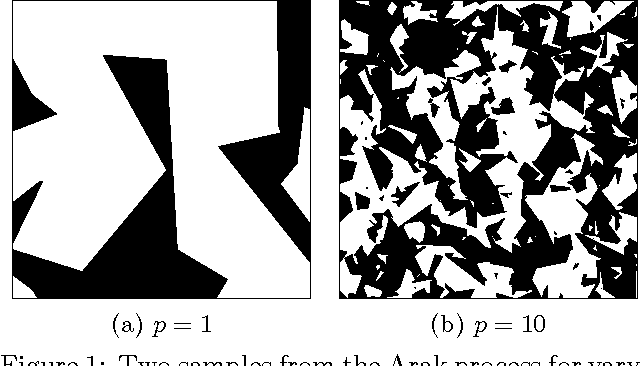
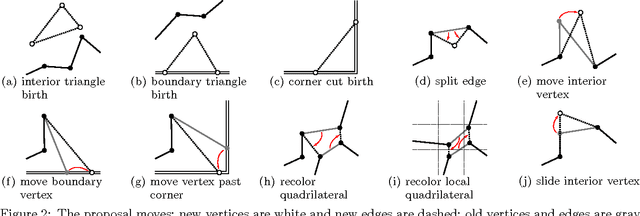
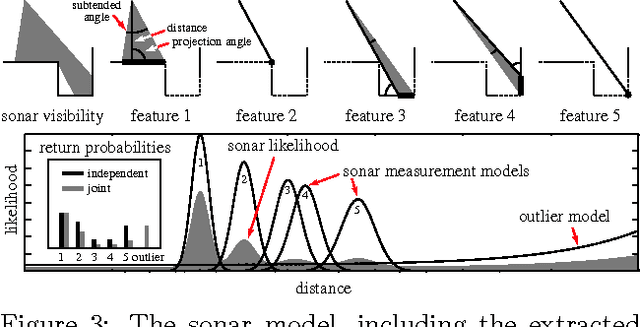
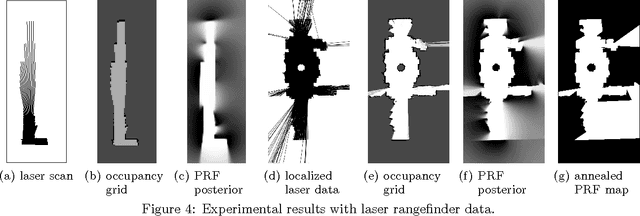
Abstract:Two types of probabilistic maps are popular in the mobile robotics literature: occupancy grids and geometric maps. Occupancy grids have the advantages of simplicity and speed, but they represent only a restricted class of maps and they make incorrect independence assumptions. On the other hand, current geometric approaches, which characterize the environment by features such as line segments, can represent complex environments compactly. However, they do not reason explicitly about occupancy, a necessity for motion planning; and, they lack a complete probability model over environmental structures. In this paper we present a probabilistic mapping technique based on polygonal random fields (PRF), which combines the advantages of both approaches. Our approach explicitly represents occupancy using a geometric representation, and it is based upon a consistent probability distribution over environments which avoids the incorrect independence assumptions made by occupancy grids. We show how sampling techniques for PRFs can be applied to localized laser and sonar data, and we demonstrate significant improvements in mapping performance over occupancy grids.
 Add to Chrome
Add to Chrome Add to Firefox
Add to Firefox Add to Edge
Add to Edge